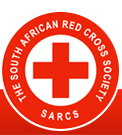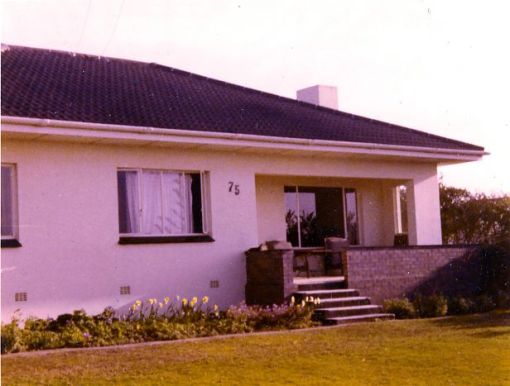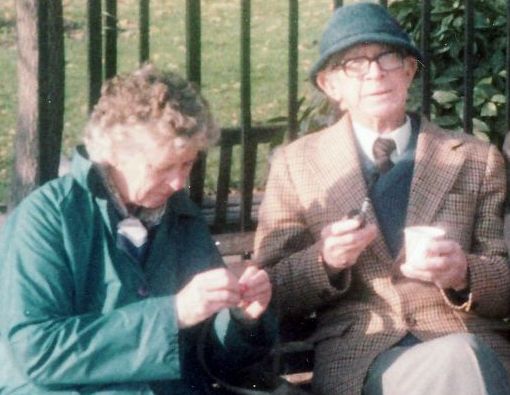We returned to our Gonubie house and prepared to resume our normal life there, but I found a letter from the editors of the Standard Encyclopaedia of Southern Africa (SESA) awaiting me. They referred me to my letter to them offering to write an article on the ‘South African Navy’ for their publication, telling me that the ‘official’ article written by the Navy was completely unsuitable for them and asking me write one; as they wanted the competed article to reach them within three weeks they would double the amount of my payment! Margery and I were most amused at this but I at once settled down to write the article required and sent it back in time.
At the beginning of 1974 I had to go to hospital for two fairly serious operations. Some months afterwards, as I was recuperating, the Taylors came to spend some time with us. One day Mark said to me that he wanted to see somebody in the King William’s Town museum and invited me to go with him just for the ride! We set off in Mark’s car and got to the museum at about 4.30 p.m., only to find that his friend had left on the previous day. Mark was very upset but, as we were in King William’s Town, I asked the man at the museum if it would be possible for us to see the newly-established Missionary Museum there. I was very interested in it as I had some weeks before received a brochure about the new Museum and had sent a cheque in answer to it to make me a ‘Foundation Member’ thereof. So the gentleman from the Kaffrarian Museum, who had introduced himself as Mr Brian Randles, went to find the keys for the new Museum and took us to it. The building in which the Missionary Museum was founded was an old Methodist Mission Church, a very suitable place for the new museum.
Mr Randles took us through the new Museum. I was much impressed with what had been done already, although there was not yet very much on display.
As we went back to the car Mr Randles turned to me and asked me what I thought about it. I replied that I was much impressed by what already had been done. So he looked at me smilingly and said, “Would you not like to become its curator?” This took me quite by surprise but, after a minute or two I said, “I would love to.” (I did not know then that Mr Randles, when I had sent in my cheque towards the new Museum, had gone to Butterworth to see me, but I had already left. He then had asked the Principal of the Butterworth High School what he thought about me, and had also asked the manager of the Bungalow Hotel, Butterworth, a man well known and a good judge of people, about me, so he (Mr Randles) had some idea of me and my ‘record’). Thus he was pleased when I accepted his offer. He then said that he would send me the papers to sign and send to the Cape Provincial Administration. Then I remembered that my doctor had said that I must under no circumstance accept any fixed occupation for at least six months. I told Mr Randles this but he replied that in any case I could not take the post, if accepted, until the beginning of November, as the person who was at that time in charge of the Museum, but who had no idea of mission work and would like to leave, had been appointed until the end of October. Thus began a friendship with Brian Randles, of the Kaffrarian Museum, which is still strong.
When Mark and I got back to Gonubie I told Margery and Helen what had happened and they were both surprised at the news. I could see that Margery was rather doubtful but Helen was enthusiastic. Meanwhile we returned to our normal life at
Gonubie. I had joined the MOTH’s ‘Shellhole’ there and attended meetings every week when possible. Apart from renewing old fellowships the MOTHs always worked on projects to help the community. We did that in Gonubie and, if my memory has not let me down, were collecting money to build tennis courts for the Gonubie school. There was only one other ‘Navy’ man in this Shellhole; he had been in the RNVR during the War and had served in one of the cross-channel liners which had been transformed into anti-aircraft ships and, during the time that Hitler’s aircraft had been bombing London, was in the Thames to set up a barrage of shells against the German bomber planes. They were successful in bringing down many of those Heinkels and causing others to fly so high that their bombs were dropped more at random than at any selected targets, wasting their energy on the water of the Thames or the grass of the fields outside the metropolis.
Margery and I enjoyed our stay at Gonubie. She did much gardening and I helped by making compost heaps. We visited and were visited by our friends Mark and Helen Taylor and also Seton and Margaret Jacques who had been on the staff of the Healdtown Institution when we had been there. They lived at Beacon Bay, near Gonubie. Seton had become interested in municipal activities and was at this time Mayor of Beacon Bay. He tried to persuade me to be elected to the Town council but I refused. But he got me to join him on the local Red Cross committee, which I found very interesting. One of its aims was to provide suitable old age homes, as many old  people could not find accommodation anywhere. Our first effort was when a hotel in East London ceased functioning and the Red Cross of South Africa bought it. Head Office in Johannesburg commissioned Seton to examine the hotel and all its fittings and, if found in good order, to take it over for the Red Cross. Seton got me to accompany him.
people could not find accommodation anywhere. Our first effort was when a hotel in East London ceased functioning and the Red Cross of South Africa bought it. Head Office in Johannesburg commissioned Seton to examine the hotel and all its fittings and, if found in good order, to take it over for the Red Cross. Seton got me to accompany him.
We went to the hotel and had to check everything in every room with the aid of an inventory. We had to see that all the window panes were in place and unbroken, that all the door knobs worked, that each door had its key, that every tap in every room was in full working order, and so on. The biggest job was to count and survey all the crockery and all the cutlery, all the sheets, blankets, pillow slips, bed covers, etc., to see that they were all ‘present and correct’, as we used to say in the navy. Then we could ‘sign on the dotted line’ of the takeover document and send it to HQ in Johannesburg, and the hotel was ours. The necessary ‘crew’ for the new old age home, formerly hotel, was soon in action in the building and then, whenever I walked in that part of East London I could see the Red Cross flying over this new old age home and feel a little pride over having had something to do with it.
But our best building was soon to come. An old man who lived near Beacon Bay made a gift to the Red Cross of a fairly large parcel of ground on condition that Red Cross built on it a modern old age home and called it after him. This was gladly accepted and then Seton had to see the architect to the Red Cross and get from him a plan for an old age home built to all the most modern specifications. He had to travel several times with this plan to Pretoria to see the ‘high ups’ in the Department of Health and Welfare, who proposed several modifications to the plan. After several other modifications and trips to Pretoria the plan was officially approved, and then the work could begin. It took several months before the building was completed and then its Red Cross staff was drafted to it. When they were all there we could have the dedication ceremony. The day before this took place all the local Red Cross committee inspected the home to see that everything was in order, even to the books in the little library and the cutlery and crockery in the big scullery. We had invited the Administrator of the Cape to perform the opening ceremony, with the press and the photographer all in position. But that morning it started to rain, and it continued to do so with every-increasing strength, so when the visitors started to enter the building it soon lost its clean appearance, as the ground on which our latest old age home was built was red clay, which soon became red mud. Thus, though we had cemented pathways from the front and back doors, the visitors had to walk from their parked carts across much mid to reach the pathways, which soon became submerged in red mud, much of which naturally was carried into the building. At the doors they were met by the Matron and other members of staff who showed them the way to the big sitting room where we had to have the opening ceremony (originally planned for outside) and I could see that in spite of the cleaning up on the day before and the valiant attempts to enable visitors to leave the mud outside our smart new building was looking very bedraggled! However, the opening ceremony was a great success and everybody seemed very happy!




Leave a comment